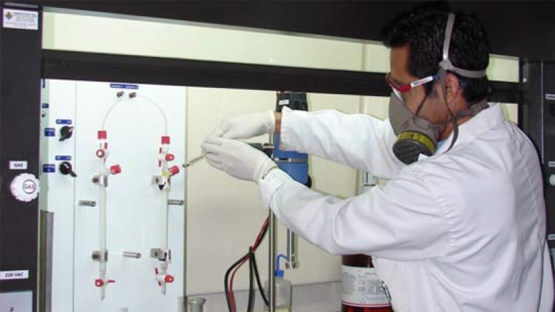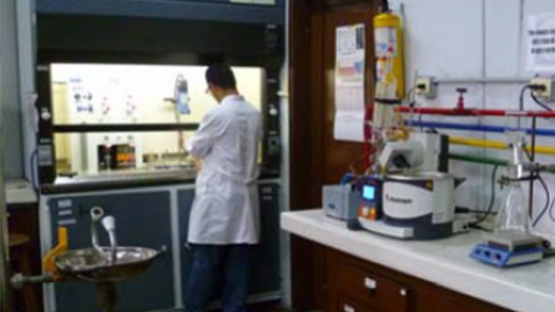The Pesticide Residues Analysis Laboratory (LARP) of the Chemistry Department at Universidad Nacional de Colombia was created with the specific objective to solve problems related to agrochemical use and misuse in Colombia.
The laboratory was inaugurated in 2000 under the auspices of the IAEA technical cooperation project COL/5/018 “Assessment of Pesticide Residues in Vegetables, Fruits and Flowers and their Impact on the Environment”. The IAEA project provided access to regional experts and the necessary infrastructure, including instruments and supplies to help establish quality system management.
In 2005 the technical cooperation project COL/5/022 “Assessment of the Impact of Pesticides Use in Tota Lake, Boyaca, Colombia” funded a liquid scintillation analyzer. This project involved close cooperation with the Food and Environmental Protection Laboratory (FEPL) in Seibersdorf and enabled LARP to become a service laboratory with an efficient quality control and quality assurance system for the analysis of agrochemical residues. A key output was the production of a video that showcased LARP on national television.
The laboratory was accredited under ISO 17025 on March, 6th 2007. This formally recognized LARP’s commitment to provide accurate and reliable results. Having achieved accreditation, results produced by LARP started to be recognized nationally and internationally.
LARP offers analytical services which include the analysis of volatile pesticides by gas chromatography with specific detectors such as 63Ni electron capture detector for the determination of organochlorine compounds, nitrogen phosphorous detector for compounds that contain nitrogen or phosphorus, and the flame photometric detector for compounds that contain phosphorus or sulfur. Mass spectrometry is mainly used for the confirmation of positive results.
For the analysis of more polar and less volatile pesticides LARP offers high performance liquid chromatographic techniques with post-colum derivatization, fluorescence and diode array (DAD) detectors. Generally, LARP employs multi-residues methodologies for determination of pesticides residues in fruits, vegetables, cereals, coffee, vegetable oils, water and soils.
Over the years, LARP gradually increased its laboratory area and improved the infrastructure of the instrument laboratory where the chromatographic instruments are located. Similarly, the sample preparation laboratory where extraction and clean up of samples are carried out was recently brought into full compliance with ISO 17025 requirements. This laboratory now has the necessary equipment for preparation, processing, extraction and clean-up procedures of samples. The laboratory adheres to stringent safety requirements to protect the laboratory personnel.




